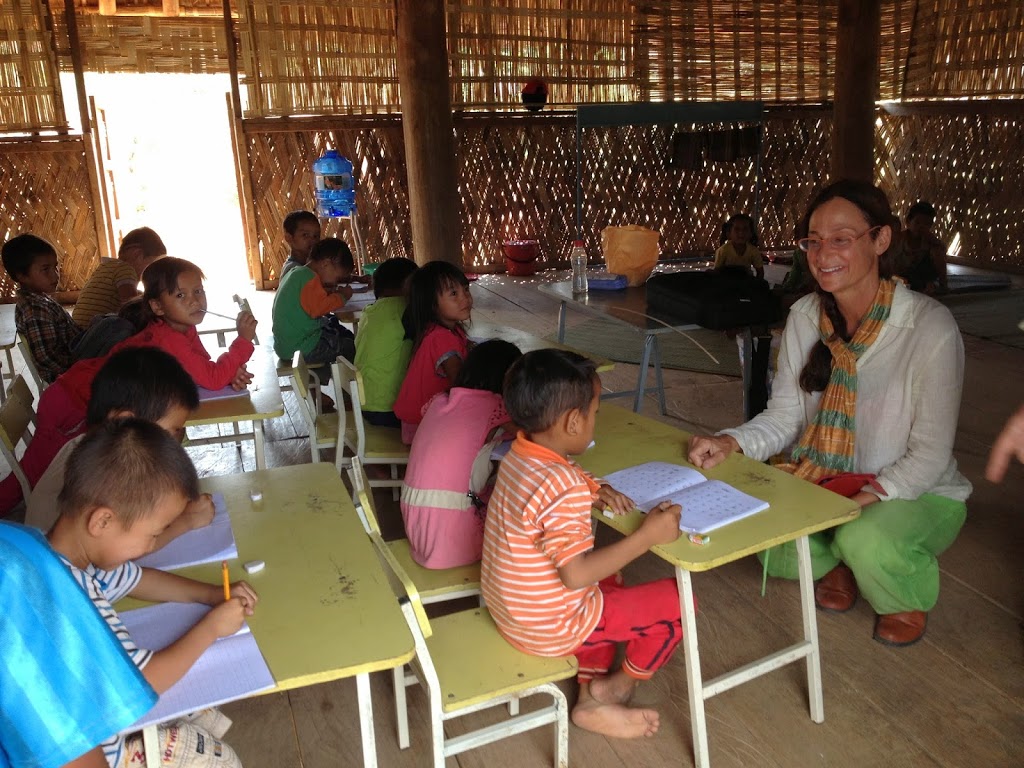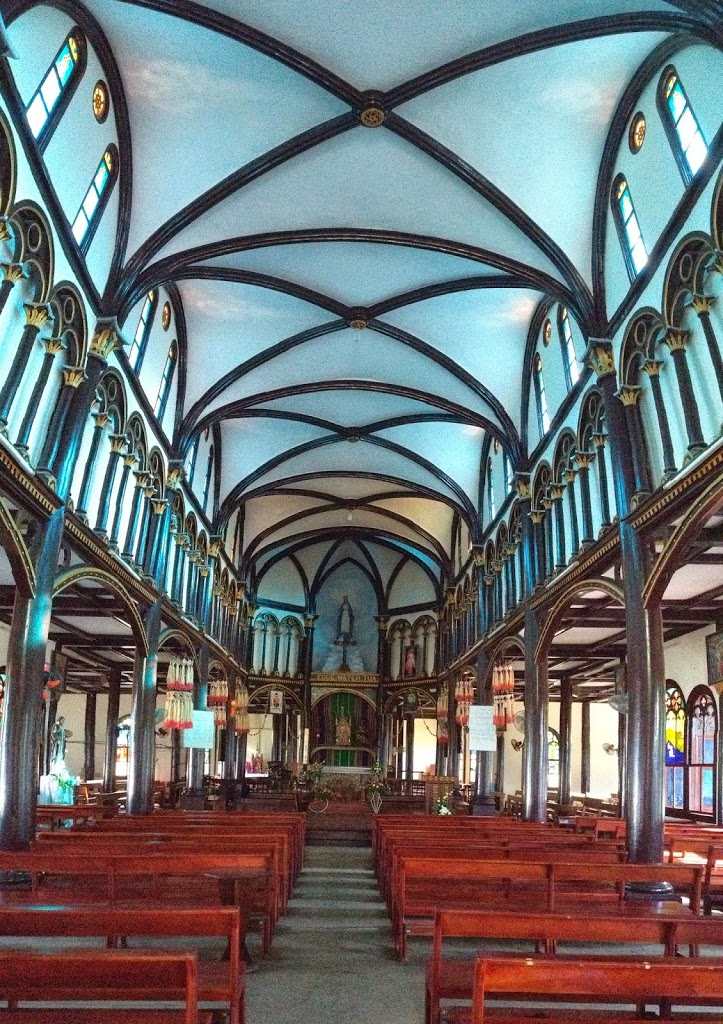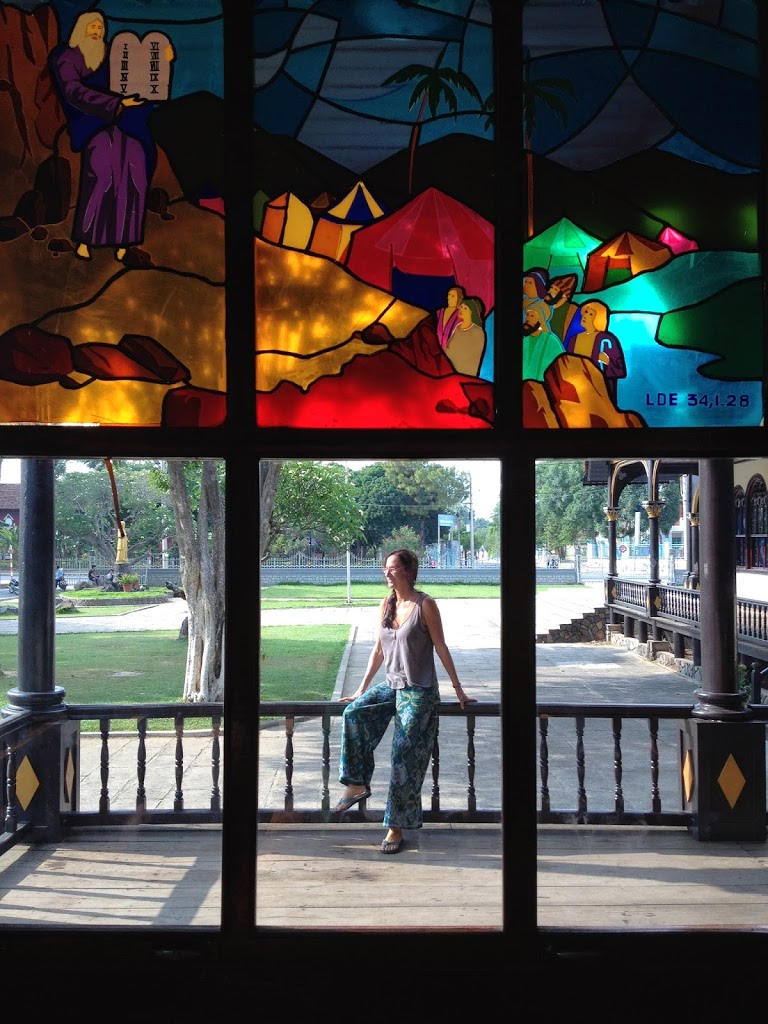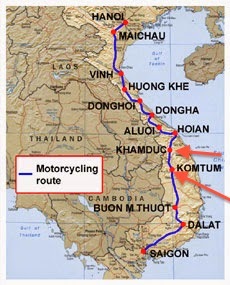The goal for Day Two is to get to Kon Tum. However, when we are still two hours away, it’s 4 p.m., and a huge storm is clearly moving toward us. We are all pretty beat anyway, so we stop in Ngoc Hoi, a fairly large town / city rather than driving on wet roads when we are tired.
Back on scooters for our third day on the road and we soon get to Kon Tum. Kon Tum is the Provincial Capital of the region and is home to 700 villages of 4 ethnic communities.
We are “notified” that we are entering an ethnically rich region, when we excitedly spot our first “Rong” – the impressive communal houses on stilts with soaring thatched roofs.
 |
| Rong – Communal house. We first saw one of these at the Ethnography Museum in Hanoi and both were eager to see them in context and in use in the Central Highlands of Viet Nam.
|
 |
| Many indigenous women in this region carry their babies in fabric slings. |
 |
| The indigenous populations have distinctly different features as well as distinct languages. |
 |
| Kids along the way are exceptionally friendly. |
 |
| Getting a sense of the vernacular architecture… Homes along our path… |
 |
| Some of the houses have walls made from bamboo mats. |
 |
| The first Rong we go inside is made from wood, bamboo and thatch. Originally the stilts were used to protect the inhabitants from animals such as tigers and elephants. |
 |
| Entrance to the Rong |
 |
| The Rong is used for communal village activities and ceremonies. This one has a gorgeous woven bamboo floor, and walls and painted totem like beams. |
 |
| The ceiling of the Rong really soars inside. It is believed that the “taller the roof, the stronger the village.” |
 |
| What could be more perfect for doing some yoga stretches to ease the stiffness of being on the scooter for so many hours. The woven bamboo floor feels great. The Rong is nice and cool inside as well. |
 |
| Tempting as it is, we resist the detour offered by this rustic wooden bridge which crosses the river. We will never know what riches lie beyond this particular path… |
 |
| A couple of hours driving through beautiful countryside and . We spot our second “Rong”. This Rong is being used as a classroom. |
 |
| The Rong makes for a cool and airy classroom. |
 |
| A little girl looks up for a few seconds from her workbook. |
More scooter time, and we arrive in Kon Tum, the provincial capital ~ a moderately sized city, which is a surprise after the drive in the mountains and smaller more sleepy villages along the way.
 |
| A local cafe ~ just the place for Ben to take a look at our local city map to consider how we want to spend our day in Kon Tum. |
 |
| This all wooden church was built in 1913 by the French and is still in use today. It has been meticulously preserved and is an architectural treasure. |
 |
| Interestingly, the Catholic church has played an important role in this region over that past few decades, by being the organization which facilitated the teaching of indigenous languages to the local minorities — which is not taught in the Vietnamese school system – which prioritizes having a uniform national curriculum. |
|

|
| Corn drying on the side of the road. This area has corn as one of its main crops. The corn is white and starchy. |
 |
| There are still some houses made from mud (with wooden poles) in use today. |
 |
| The city of Kon Tum’s tallest Rong is impressive for its height. |
 |
| A carved very thick wooden ladder leads up to the entrance of the Rong. |
 |
| Designs are painted on the trim of the Rong, bordering the woven wall mats. |
 |
| Wooden floors and students desks in front of the Vietnamese flag. |
 |
| A man picking “milk apple” fruit nearby, gives a bag of these to Adam. They are crunchy and very juicy yet blander than an apple. The flavor is similar to jicama and cucumber. Later we give them to children we met in an ethnic village. |




























I love the ladder!!!
I love the view up into the ceiling of the rong. The people are beautiful, especially the kids. It’s cool they let you into the school, and they seem amazed by you.
A very beautiful people indeed. Mutual amazement.
How beautiful and different !! gorgeous children indeed…
I wonder why the houses are so tall – maybe it keeps them cool, since the heat rises to the very top.
The height does keep the houses cool, but also there is a belief that the taller the roof, the stronger the village.